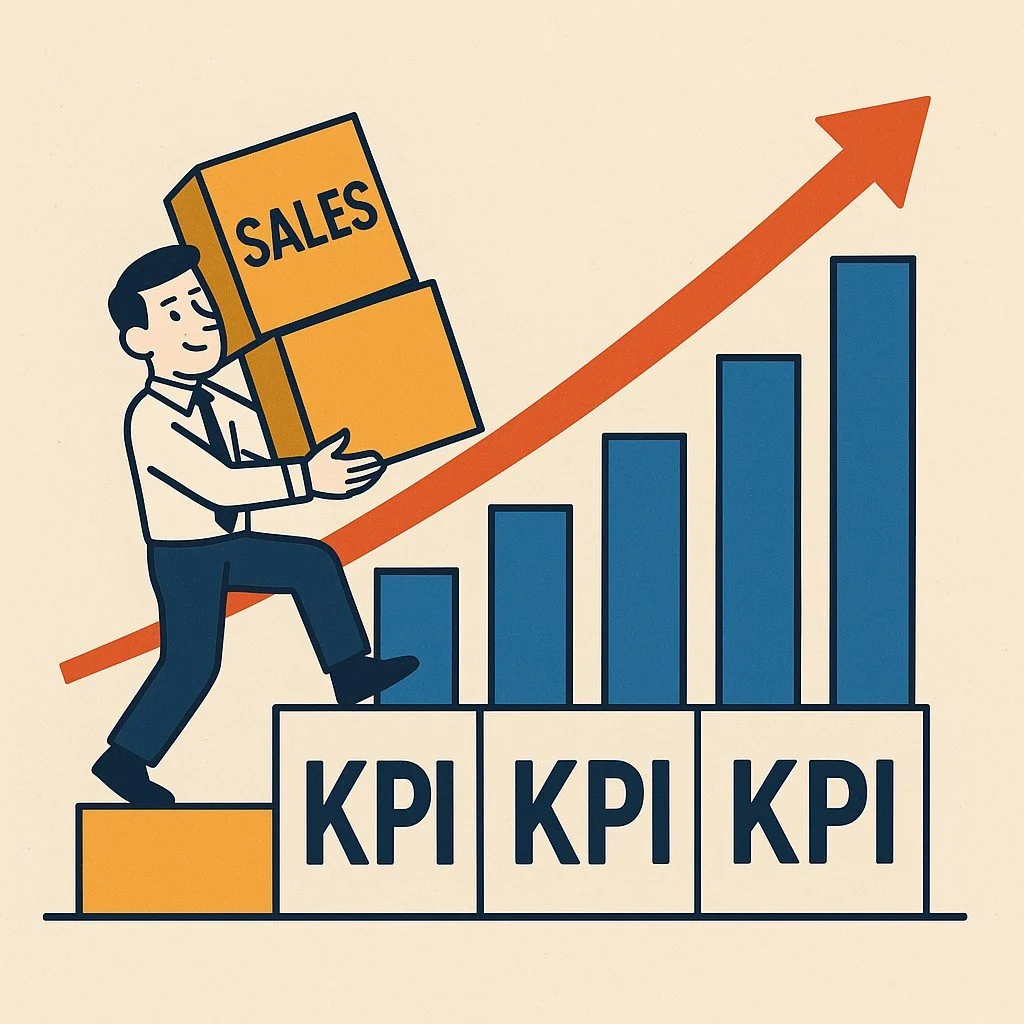Case Study: Driving Sales Growth Through Forward-Looking KPIs
Industry: B2B Consumables
Annual Revenue: ~$400M
Region: US Southwest and West Coast
Team Size: 100+ Sales Reps, 6 Regional Managers, 1 VP of Sales
Project Duration: 8 months
The Challenge
The client, a $400M B2B consumables company with operations across a number of states and multiple time zones, managed sales performance using only two metrics: dollars sold and pounds sold. Both were rear-looking indicators that revealed past results but offered no insight into what activities actually drove sales.
With over 100 sales reps reporting into six regional managers and a newly promoted VP of Sales, the organization lacked a structured sales operations framework, leading to:
Inability to measure activity levels that predicted success.
Inconsistent performance across sales reps.
Reliance on lagging KPIs that limited proactive decision-making.
Ineffective system to drive activity that led to sales.
My Role
I was engaged as an outside consultant embedded directly alongside the new VP of Sales. My role spanned four dimensions:
Executive Coaching: Guiding the new VP of Sales in designing a sales operations system.
Framework Design: Developing a new KPI structure to measure leading indicators.
Manager Development: Coaching regional managers on managing via activity-based metrics.
Field Training: Working alongside sales reps to adopt new practices and interpret KPIs.
Solutions Implemented
1. Introducing Leading KPIs
Established number of sales calls per day as the first measurable leading indicator.
Created a simple, low-friction system: reps texted daily call counts to managers.
Used two weeks of data to create a baseline, then tracked improvements.
Result: Over 8 months, average daily sales calls increased by 19% across the organization.
2. Customer Segmentation Framework
Reps categorized accounts as:
Growing
Declining
Dead (inactive)
Steady
New target accounts
Regional managers tracked what type of accounts each call targeted.
Analysis revealed that top-performing reps devoted more time to growing and new accounts, while lower performers over-invested in steady accounts.
Established ideal call mix based on patterns of high-growth reps.
3. Coaching & Embedding Change
Trained six regional managers on how to coach reps using the new KPIs.
Co-designed with the VP of Sales a reporting cadence and performance dashboards.
Helped integrate segmentation and KPI tracking into onboarding for new hires, ensuring sustainability.
Results
+19% increase in daily sales calls.
Cultural shift toward activity-driven performance management.
12% sales lift above target:
Target for year: $400M
Actual (annualized): $445M
Previous year: $365M
$45M incremental revenue gain achieved in just 8 months.
Lasting impact: Customer segmentation and KPI frameworks were adopted into company culture and new hire training.
Insights
Measuring only sales is like “driving by looking in the rearview mirror.” Leading KPIs empower leaders to steer future outcomes.
Minimal-intrusion data collection builds rep buy-in, especially when they see immediate personal benefit (higher commissions).
Coaching regional managers created leverage: one layer of leadership improved the habits of 100+ reps.
Embedding the system into onboarding ensured the improvements outlived the project.
